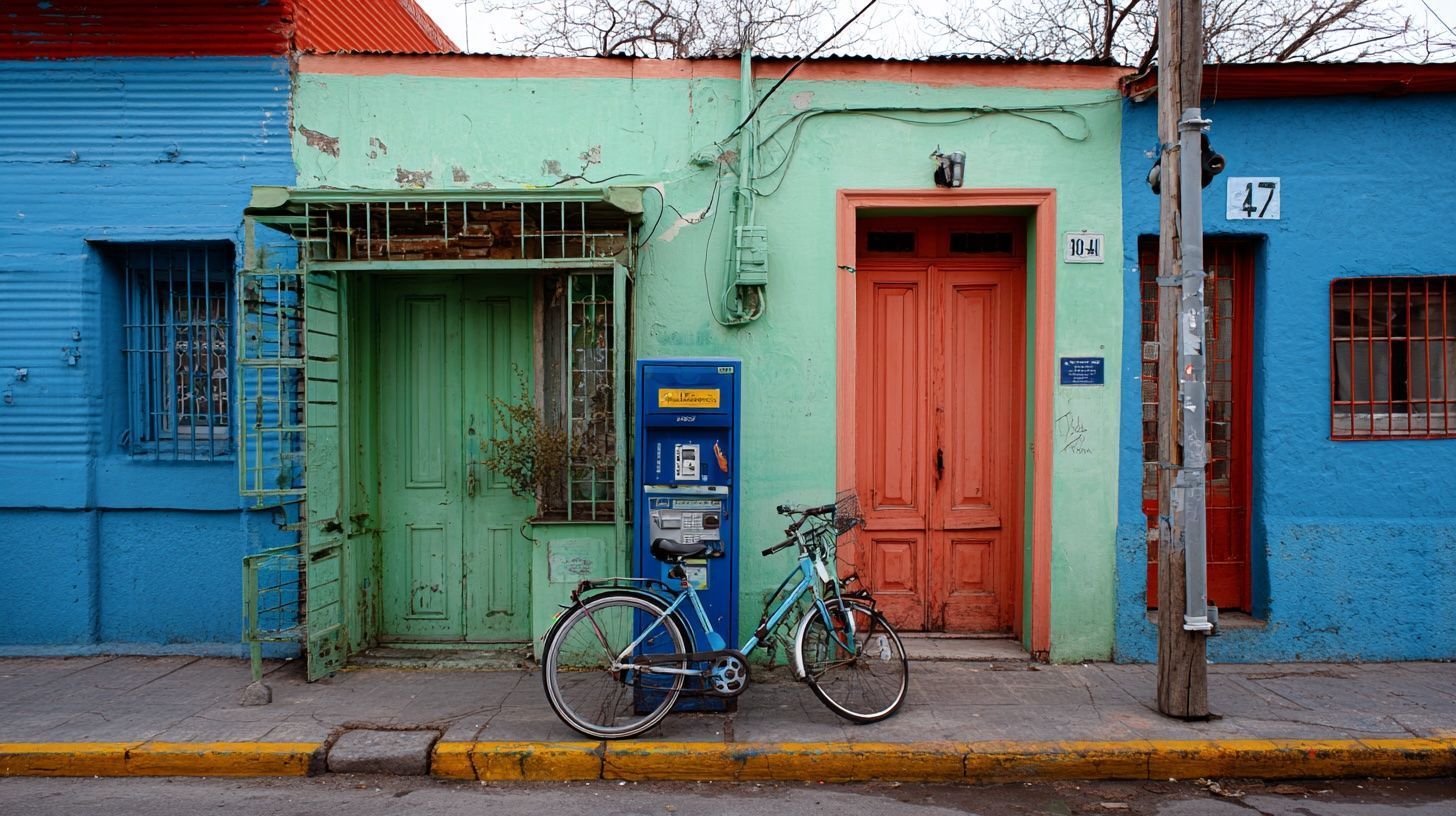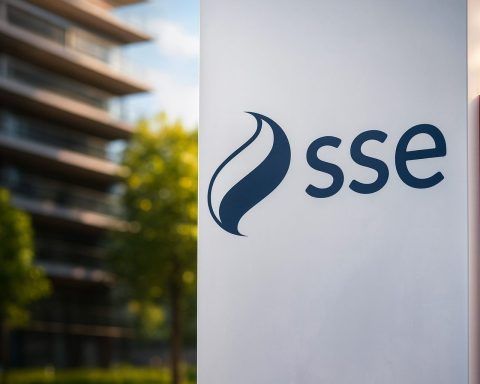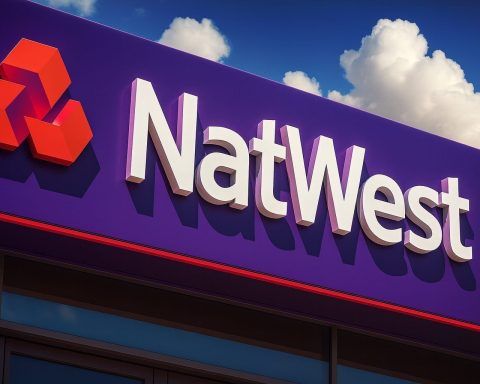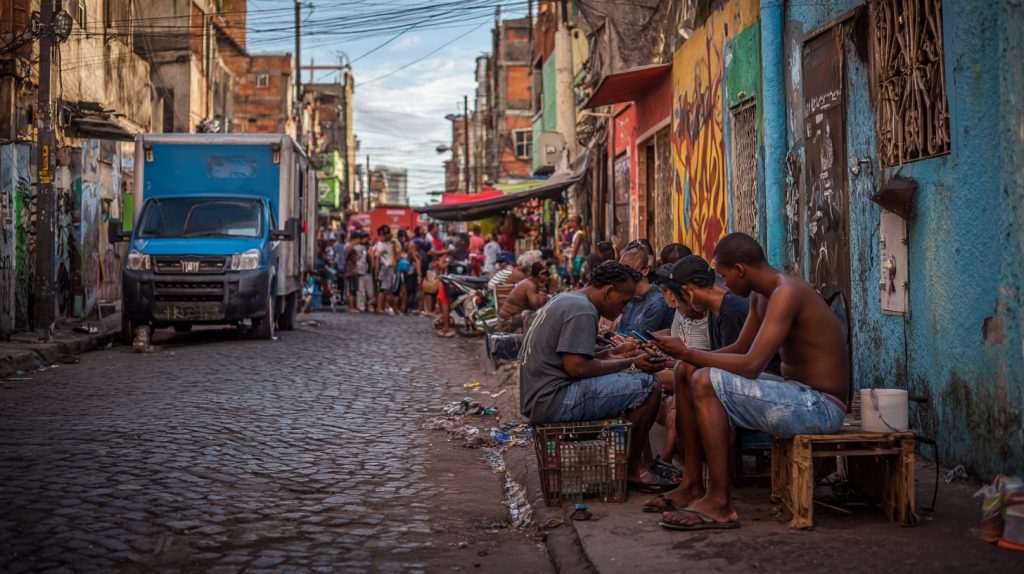- Argentina had about 40.6 million internet users and an internet penetration of 88% in early 2024, according to DataReportal.
- Fixed broadband subscriptions reached 11.9 million by end-2024, including about 4.8 million fiber subscriptions, up roughly 1 million that year.
- Fiber grew to represent about 41% of fixed broadband lines nationwide by late 2024, up from roughly 34% at end-2023.
- In October 2023, a 3.5 GHz mid-band spectrum auction allocated 250 MHz to Claro, Movistar, and Personal, enabling broader 5G deployment.
- In February 2024, Argentina authorized low Earth orbit satellite providers Starlink, OneWeb, and Kuiper to operate nationwide.
- Starlink began accepting customers in mid-2023 and, by 2024, was launching commercial service in Argentina.
- Telecom Argentina, operating as Personal/Fibertel/Flow, had about 4.0 million fixed broadband subscribers and 21.6 million mobile lines in 2024.
- Telecentro had about 1.5 million fixed broadband connections in 2024, a 10,000 km fiber network, and accounted for roughly 12–13% of the fixed broadband market.
- April 2024 ENACOM deregulated prices, lifting caps, and by end-2024 fixed broadband ARPU rose from ARS 3,700 to ARS 15,600.
- Fixed broadband household coverage reached about 80% by end-2024, higher than Brazil’s ~70% but still behind Chile and Uruguay.
Introduction: Argentina stands among Latin America’s most connected countries, with over 40 million internet users and an individual internet penetration of about 88% as of early 2024 [1]. The country’s telecom landscape is evolving rapidly: fiber-optic networks are expanding, 5G mobile services are rolling out, and new satellite options promise to reach remote areas. Yet significant disparities persist between urban and rural connectivity, and economic challenges influence both service deployment and affordability. This report provides a comprehensive overview of Argentina’s internet infrastructure and usage in 2025 – covering fixed broadband (fiber, DSL, cable), mobile broadband (4G/5G), and satellite services – and examines penetration, speeds, major providers, government initiatives, the emerging role of satellite internet, regional comparisons, and the key challenges and opportunities in expanding access.
Overview of Internet Infrastructure in Argentina
Argentina’s internet infrastructure comprises a mix of fixed broadband technologies (fiber-optic, cable, and legacy DSL), extensive mobile networks, and nascent satellite services:
- Fixed Broadband (Fiber, Cable, DSL): Fixed internet access is widespread, reaching roughly 80% of Argentine households by the end of 2024 [2]. This equates to about 11.9 million fixed broadband subscriptions (approximately 25% of the population) [3]. Legacy DSL connections have steadily declined as operators migrate customers to faster fiber-optic links [4]. Cable broadband – historically dominated by Cablevisión (now part of Telecom Argentina) – remains significant, accounting for just under half of fixed connections, though its share has been dropping since 2021 as fiber grows [5]. Fiber-to-the-home (FTTH) deployment has accelerated dramatically: nearly 4.8 million fiber subscriptions were active by late 2024, an increase of ~1 million in that year alone [6]. Fiber now represents about 41% of all fixed broadband lines nationally [7], up from roughly 34% at the end of 2023 [8]. This growth reflects ongoing upgrades of copper networks and new fiber rollouts in cities. Fixed-line telephony, meanwhile, continues a slow decline as users rely more on mobile and VoIP services [9].
- Mobile Broadband (4G and 5G): Mobile internet is the primary means of access for many Argentines, supported by high mobile penetration and nationwide 4G LTE coverage [10]. As of early 2024, Argentina had 62.1 million cellular connections, equivalent to 135% of the population (many people maintain multiple SIMs/devices) [11]. 4G networks are well-developed, covering over 97% of the population [12]. 5G arrived in Argentina in 2021 in limited form – the first 5G services launched using re-farmed 4G frequencies [13]. A dedicated 5G spectrum auction in October 2023 allocated 3.5 GHz mid-band frequencies (250 MHz total) to the three mobile operators (Claro, Movistar, and Personal), enabling broader deployment of 5G [14]. By 2024, 5G signals began extending beyond Buenos Aires and other main cities, but coverage and adoption remained modest with only a small fraction of subscribers on 5G [15]. Early 5G rollouts include Standalone 5G cores being built and initial antennas in dense urban zones. The expectation is that 5G fixed wireless access (FWA) will help bring high-speed home broadband to areas lacking fiber [16]. For now, 4G continues to carry the bulk of mobile data traffic nationwide.
- Satellite and Other Technologies: Historically, satellite internet in Argentina played a niche role, primarily serving very remote communities. The state-owned operator ARSAT provides wholesale satellite connectivity (via geostationary satellites ARSAT-1 and 2) to rural telecenters, schools, and some homes. Until recently, virtually all consumer satellite service depended on ARSAT or on resellers using its capacity [17]. However, 2023-2024 marked a turning point: Argentina authorized low Earth orbit (LEO) satellite providers to operate, opening the door to SpaceX’s Starlink, Amazon’s Project Kuiper, and OneWeb’s services [18] [19]. This regulatory green light – issued in Feb. 2024 – allows these companies to offer high-speed, low-latency satellite internet nationwide starting in 2024 [20] [21]. Starlink, in particular, began accepting customers and partnering locally; for example, Argentine ISP Telecentro signed an agreement to resell Starlink connectivity for businesses and to reach rural areas beyond its terrestrial network [22] [23]. Additionally, providers like HughesNet and Viasat have obtained licenses and (through partners like local ISP Orbith) are vying for rural broadband users [24]. Overall, while satellites account for a tiny share of internet connections in 2025, their role is growing as a complementary solution for Argentina’s hardest-to-reach regions.
Internet Penetration and Urban–Rural Accessibility
Argentina enjoys a high overall internet penetration, but there is a notable divide in accessibility and quality between urban centers and rural or remote areas:
- National Penetration: As noted, about 88–89% of Argentines use the internet [25] [26], one of the highest rates in Latin America [27]. Nearly 80% of households have fixed broadband service as of end-2024 [28] – a level that grew from ~78.5% the previous year. In absolute terms, the country had ~40.6 million internet users at the start of 2024 [29]. This widespread usage is driven by the urban majority of the population and the ubiquity of mobile internet access.
- Urban vs. Rural Coverage: Argentina’s population is highly urbanized (about 92.5% urban [30]), and connectivity infrastructure is correspondingly concentrated in cities and towns. In major urban centers – particularly the central region encompassing Buenos Aires, Córdoba, Santa Fe, and Mendoza – residents typically have multiple options (fiber, cable, 4G/5G) and better service quality. Indeed, household internet availability reaches 88% in Argentina’s urban core – one of the highest in Latin America – but this statistic masks uneven geographic distribution [31]. The Cámara Argentina de Internet (CABASE) Internet Index shows connectivity is “strongly concentrated in the center of the country,” implying that many smaller provinces and rural areas lag behind [32] [33]. By contrast, rural areas face coverage gaps. A study of 331 rural localities in 2020–2021 found that over 40% of those rural communities had no internet access at all [34]. Even where mobile coverage exists in rural zones, residents often struggle with low bandwidth or rely on older 3G networks. The government has acknowledged that many who remain unconnected are in rural or remote areas [35].
- Gaps and Workarounds: Where fixed lines are absent, rural inhabitants often depend on mobile broadband or creative solutions. Surveys indicate that among households that lack a fixed internet connection, 78% get online via other means – 41.6% use mobile data on smartphones, and 36.8% even resort to using a neighbor’s Wi-Finetwork [36]. (Only ~21% of those without home internet remain entirely offline at home [37].) This highlights both the strong demand for connectivity and the lengths to which Argentines will go to get access in underserved areas. It also underscores an affordability issue: a telling statistic from CABASE is that nearly 80% of offline households in Argentina actually had internet in the past – implying they canceled service, likely for economic reasons [38]. Rural provinces in the North and South generally have fewer broadband subscribers and lower average speeds than wealthier, populous provinces. For instance, while more than two-thirds of households in Buenos Aires province enjoy 50+ Mbps speeds, many rural provinces still have significant portions of users below 20 Mbps [39]. Bridging this urban–rural digital divide remains a core challenge: even as fiber and 5G expand in cities, the focus is now shifting to extending backbone networks and last-mile solutions into Argentina’s sparsely populated interior.
Speed and Pricing Trends
Connection Speeds: Internet speeds in Argentina have improved markedly in recent years, though they still lag the global average and top regional peers in some cases [40]. According to Ookla Speedtest data, as of January 2024 the median download speed for fixed broadband was 75.9 Mbps, while the median mobile data download was about 25.0 Mbps [41]. Fixed broadband speeds jumped ~26% year-over-year (a gain of ~15.5 Mbps in the median) as fiber upgrades proliferated [42]. Mobile speeds also saw a healthy 12.7% bump from the prior year [43]. These figures indicate that Argentina’s typical home internet experience is reasonably fast – suitable for HD streaming and videoconferencing – and mobile bandwidth is sufficient for most app usage. Moreover, national aggregates hide a distribution: nearly 80% of fixed broadband connections now operate at 30 Mbps or higher speeds [44] [45]. In fact, about 62% of households get 50+ Mbps service, including over one-third exceeding 100 Mbps, thanks to fiber and DOCSIS cable in cities [46]. Still, a minority remains on slower links – roughly 20% of fixed lines were under 20 Mbps as of late 2023 [47], likely in rural areas or on old DSL. For mobile, the advent of 5G is expected to boost wireless speeds further (early tests show 5G users can get 200+ Mbps in optimal conditions), but in 2024 the average mobile user on 4G saw tens of Mbps. It’s worth noting that Argentina’s speeds, while improving, trail Chile’s (which leads the region in fixed broadband speed) and some regional averages [48]. Ongoing investments in fiber backbones, 5G rollout, and new submarine cables (like Google’s Firmina cable planned to land in Argentina) aim to push speeds higher and reduce latency in coming years [49] [50].
Pricing and Affordability: Internet pricing in Argentina is a complex issue, heavily influenced by economic volatility. The country’s hyperinflation and currency devaluation have led to rapidly rising service costs and periodic government intervention. In 2020, the previous government declared telecom services “essential” and froze or tightly regulated broadband and mobile tariffs (Decree 690/2020) [51]. This policy, intended to keep internet affordable during the pandemic, resulted in price caps that limited providers to single-digit percentage increases – well below inflation – for several years. While it benefited consumers in the short term, it also eroded ISPs’ revenues in real terms and discouraged investment in network expansion [52]. By 2022–2023, inflation soared above 100% annually, and operators struggled with regulated fees. For example, the average revenue per fixed internet user (ARPU) was only ARS 3,700 at the start of 2024 due to caps, but after partial liberalization it jumped to ARS 15,600 by the end of 2024 – roughly a fourfold increase [53]. This surge far outpaced even Argentina’s 118% inflation in 2024, indicating a catch-up of prices once controls eased [54]. Indeed, in April 2024 the new administration reversed the 2020 policy: ENACOM lifted the cap on internet, mobile, and TV rates (via Emergency Decree 302/2024), allowing companies to set “fair and reasonable” prices freely [55] [56]. As a result, significant service price hikes ensued in mid-2024.
For consumers, the combination of past underpricing and current price corrections has been challenging. A study found 67.5% of Argentine households had taken measures to reduce telecom expenses – such as downgrading plans or canceling services – amid the economic crisis [57] [58]. Some low-income users who received free or subsidized mobile data during the pandemic lost those benefits afterwards, affecting usage. In USD terms, Argentina’s broadband prices can be hard to pin down due to exchange rate flux; however, at official rates a standard home fiber plan of 100 Mbps cost roughly $20–$30 USD per month in 2024, which is affordable by global standards, but in local terms these fees rose sharply and ate into household budgets. The opportunity going forward is that with pricing now liberalized and (hopefully) stabilizing, operators may have more incentive (and revenue) to upgrade networks, while targeted subsidy programs can focus on connecting those who still find service out-of-reach. Notably, the government continues to offer a basic universal service plan (“Prestación Básica”) at a discounted rate for qualifying low-income users to mitigate the affordability gap.
Major ISPs and Market Share
Argentina’s telecommunications market features a mix of large multi-service operators and numerous smaller providers. It is highly competitive in mobile and relatively fragmented in fixed broadband. The major Internet Service Providers (ISPs) and their market positions are as follows:
- Telecom Argentina (Personal/Fibertel/Flow): The largest telecom operator, Telecom Argentina, offers fixed broadband, mobile, and pay-TV. It merged with Cablevisión (Grupo Clarín’s cable broadband unit) in 2018, creating a convergent giant [59]. At the end of 2024, Telecom had roughly 4.0 million fixed broadband subscribers [60] – about one-third of the national total. This includes customers under the Fibertel/Flow brand (cable and fiber). On the mobile side, Telecom’s Personal brand had ~21.6 million mobile lines in 2024 [61], making it the second-largest mobile carrier. Personal holds about 33% of mobile subscriptions [62]. Telecom’s broad portfolio (fixed voice, broadband, mobile, TV) and extensive infrastructure give it a dominant role, though its revenue has been squeezed by the economic climate [63]. The company has aggressively invested in fiber upgrades and even launched one of Argentina’s first 5G Standalone cores in preparation for 5G expansion.
- Telefónica de Argentina (Movistar): Telefónica’s Movistar is another key player, historically the incumbent fixed-line operator in the Buenos Aires region and a nationwide mobile provider. Movistar is Argentina’s third-largest mobile operator with about 27–28% share (16+ million mobile subscribers) [64] [65]. In fixed broadband, Movistar has been smaller since its fixed network was regionally limited and DSL-based. It has been rolling out FTTH in cities like Buenos Aires, but its fixed broadband base is only around 1.3 million subscribers(roughly 11–12% market share) [66]. Telefónica has been reportedly looking to exit Argentina (as part of a Latin America restructuring), and in early 2024 it agreed to sell its local operation to Telecom Argentina; however, the government put this merger on hold citing competition concerns [67]. Thus, Movistar continues to operate independently for now. Notably, Movistar has been recognized for leading fixed broadband speeds – a 2023 nPerf report rated Movistar’s fiber service as the fastest in average download (137 Mbps) and upload (127 Mbps) among Argentine ISPs [68].
- Claro Argentina (América Móvil): Claro, owned by Mexico’s América Móvil, is the mobile market leader with around 40% of mobile subscribers in Argentina [69]. It had ~24–25 million mobile lines as of 2023. Claro’s strength is in mobile (voice and data); unlike Telecom and Telefónica, it historically lacked a large fixed-line presence due to regulations that once barred mobile-only players from offering broadband. Only in recent years has Claro begun deploying fiber in select cities and offering fixed wireless access. Its fixed broadband subscriber numbers are still relatively small (a few hundred thousand at most). Claro is now leveraging its mobile infrastructure and, after the 2023 spectrum auction, partnering with Nokia to roll out 5G coverage in major cities [70]. In the fixed arena, Claro is somewhat of a challenger – it’s pursuing an “aggressive commercial strategy” to gain broadband customers, including bundling and competitive pricing [71]. Still, as of 2025, Claro’s impact in fixed internet is modest, and nPerf ranked its broadband performance last among major ISPs (citing higher latency and inconsistent speeds) [72].
- Telecentro: Telecentro is a prominent regional cable and fiber ISP focused on the greater Buenos Aires area. It’s a privately-owned company that has gained a significant share in the capital region by offering high-speed triple-play (it was among the first to offer 1 Gbps service in Argentina). Telecentro has an estimated 1.5 million broadband connections as of 2024 [73], giving it roughly 12–13% of the national fixed broadband market. This makes Telecentro the third-largest fixed ISP after Telecom and Telefónica. Its 10,000 km fiber network is currently concentrated in Buenos Aires city/province and a few adjacent provinces [74]. Telecentro does not offer mobile service (though it had once held spectrum, it never built a 4G network and instead has now partnered with Starlink to reach areas out of its footprint) [75] [76]. Known for competitive pricing and unlimited data plans, Telecentro often pushes incumbents in urban markets to improve service. According to nPerf, Telecentro’s broadband ranks highly in latency (21 ms) and has speeds comparable to Movistar (around 139 Mbps down) [77].
- Other ISPs and Cooperatives: Outside the big players, Argentina has a long tail of smaller ISPs. In fact, “others” collectively account for an estimated 40% or more of fixed broadband subscriptions. These include hundreds of local cooperatives and city-based ISPs that historically provided telephone or cable TV in areas not well served by the majors. Many have upgraded to fiber and form part of the CABASE association. For instance, provincial companies like Supercanal (in Cuyo and the interior) or community co-ops in towns have their share of customers. The state-owned ARSAT does not sell retail internet, but it enables many of these small ISPs by providing backbone connectivity (via the federal fiber network and satellite). This fragmented market means that while the top 3-4 providers cover the big cities, a myriad of smaller operators fill gaps especially in small towns and rural communities. This competitive diversity has benefits – it drives innovation and can lower prices locally – but it also means uneven service quality and scale. Efforts are underway to integrate these networks through IXPs and the national fiber backbone so that even the smallest ISP can deliver decent speeds.
In summary, Argentina’s ISP market is characterized by three telecom giants (Telecom, Telefónica, Claro) dominating mobile and large parts of fixed, a strong regional player (Telecentro) in the capital, and a resilient ecosystem of smaller providers elsewhere. Market shares are in flux as mergers are attempted and new entrants (including potentially cable companies entering mobile, etc.) appear. The competitive environment, especially after price deregulation, remains fierce but consumer-friendly, with providers vying on speed upgrades and bundles to attract subscribers [78].
Government Initiatives and Projects to Improve Connectivity
The Argentine government, often in partnership with the private sector, has been actively involved in expanding and upgrading the country’s connectivity infrastructure. Key initiatives and policy moves include:
- Plan Conectar (National Connectivity Plan): Launched in September 2020, Plan Conectar is a comprehensive program to boost broadband coverage across Argentina [79]. It entails significant public investment in infrastructure, especially in underserved areas. A centerpiece of Plan Conectar is the expansion of the Red Federal de Fibra Óptica (REFEFO) – the federal fiber-optic backbone. Over the past few years, ARSAT (the state telecom wholesaler) extended this fiber network to reach more remote localities. As of August 2023, the REFEFO had 32,804 km of fiber “illuminated” (lit and in service), connecting 1,129 towns and enabling internet access for an estimated 17.9 million people who are within reach of those network nodes [80]. By the end of 2023, the plan was to further expand to 38,800 km of backbone fiber and connect 22+ million people [81]. This entails building new fiber routes (4,400 km under Plan Conectar) and upgrading equipment to increase capacity tenfold on older links [82]. The backbone allows local ISPs and mobile operators to haul traffic at lower cost, thus extending high-speed service into provinces like La Rioja, Misiones, or Tierra del Fuego. Alongside fiber, Plan Conectar also called for expanding the national satellite system (ARSAT’s satellites) to improve rural connectivity [83]. While Argentina’s third communications satellite (ARSAT-3) has faced delays, the intent is to bolster satellite coverage for remote regions and neighboring countries.
- Universal Service & Community Access: The government administers a universal service fund (financed by a small levy on telco revenues) which has been used to co-fund connectivity projects. In January 2023, for example, ENACOM announced a program to provide internet to rural schools and health centers, allocating ARS 1 billion (about USD $6 million at the time) to connect public institutions in rural areas [84]. This is part of the “Internet for All” goal. Other initiatives include installing community Wi-Fi points in low-income neighborhoods, distributing 4G routers, and continuing “Plan Ceibal”-like efforts (inspired by Uruguay) to integrate connectivity in education. During the pandemic, the government also mandated telcos to offer a basic 2 Mbps broadband plan at a very low price for those on social benefits, to avoid disconnections – a policy that has evolved into a permanent affordable tier.
- Regulatory Changes and Investment Climate: The policy landscape shifted in late 2023 with a new administration. In April 2024, the government repealed the 2020 emergency decree (690/20) that had declared telecom services a public utility [85]. By removing strict price controls and state micromanagement of rates, the Milei administration aimed to encourage private investment through market incentives [86] [87]. The regulator ENACOM was also reformed, with new leadership indicating a more pro-business stance – emphasizing a “predictable regulatory framework” to foster the digital economy [88]. An immediate outcome was renewed talks of network investment: for instance, soon after price caps were lifted, Telecom Argentina announced it would accelerate its 5G rollout and fiber-to-the-home extensions, and Telecentro unveiled a $400 million network upgrade plan [89]. The government has also shown willingness to block mergers on antitrust grounds (as seen with the halted Telecom-Telefónica deal) [90], signaling that while deregulating, it seeks to maintain competition.
- Public-Private Partnerships (PPPs): Argentina has leveraged PPPs in telecom, particularly for rural connectivity. One example is ARSAT’s last-mile projects: ARSAT provides backhaul to a town and then partners with local cooperatives or companies to connect homes. Another example is seen in Patagonia, where Telespazio (an Italian firm) and state agency Altec partnered to use Starlink to connect schools and government offices in remote areas of Patagonia in late 2024 [91]. Rather than the government itself buying user terminals, this approach works through a private provider under government facilitation. Similarly, provincial governments have been working with operators to expand 4G coverage along highways and rural villages (often subsidizing tower construction). International collaboration is also notable: the IDB (Inter-American Development Bank) provided loans for connectivity projects, and on the subsea cable front, Argentina worked with Google and GlobeNet on new fiber routes (e.g. the Malbec cable to Brazil operational in 2021 [92], and the upcoming Firmina subsea cable linking Argentina directly to the US, expected to go live around 2023–2024 [93]). These projects improve the resilience and capacity of Argentina’s internet, lowering latency and cost for international bandwidth – which ultimately benefits consumers.
- “Internet as a Right” Legislation: Inspired by global trends, neighboring Chile and others, Argentina considered making internet access a legally protected right. While Argentina hasn’t explicitly passed such a law (Chile did in 2024), the spirit was present in the 2020 decree. Now, rather than a utility-style regulation, lawmakers are debating frameworks to guarantee minimum service standards. The consensus across the political spectrum is that bridging the digital divide is crucial for economic development. Thus, even with ideological shifts, connectivity remains a policy priority. The country’s Digital Agenda 2024 and other strategic documents highlight goals of reaching near-universal broadband coverage, deploying 5G extensively, and fostering digital skills and services.
In summary, the Argentine government’s role is twofold: infrastructure enabler (through ARSAT’s backbone, spectrum auctions, and funding assistance) and market regulator (balancing affordability with investment incentives). As of 2025, recent actions – like permitting LEO satellites, freeing prices, and investing in fiber – indicate a strategy to unleash competition and technology to close remaining connectivity gaps, while stepping in with subsidies or projects where the market alone isn’t enough (e.g. remote rural communities).
Satellite Internet Providers: Role and Availability
Satellite internet is becoming an increasingly important component of Argentina’s connectivity landscape in 2025, especially for rural and underserved regions where terrestrial networks are absent or costly to deploy. There are two broad categories of satellite internet services in Argentina:
- Geostationary (GEO) Satellite Services: These have been around for years via ARSAT and international providers. ARSAT operates two GEO satellites (ARSAT-1 and ARSAT-2) stationed over the Americas, primarily to provide telecommunications and broadcast services in Argentina. Through ARSAT, the government has offered satellite broadband to remote community centers, schools, and some individual users (often via VSAT terminals). However, GEO satellite internet has limitations – latency is high (~600ms+) and bandwidth is limited, making it a last-resort for basic connectivity. Other GEO providers like HughesNet (via Echostar XVII/XIX satellites) and Viasat have also eyed Argentina. In 2018, Viasat entered a deal to use Argentina’s ARSAT satellite capacity to offer residential internet, and Hughes has partnered with ARSAT to extend connectivity to rural schools using its Jupiter system [94] [95]. While a few thousand households might use these legacy satellite options, the big change is coming from the new generation of satellites.
- Low Earth Orbit (LEO) Constellations: As mentioned, Argentina’s government in early 2024 authorized LEO satellite operators to serve the country [96] [97]. This includes Starlink (SpaceX’s constellation), OneWeb, and Amazon’s Project Kuiper. Starlink moved quickly – it began public beta service in parts of Argentina in mid-2023 under a trial arrangement and by Q2 2024 was officially launching commercial service after the authorization. Starlink’s high-throughput, low-latency service (typically 50–200 Mbps down with ~30-50ms latency) is a game-changer for areas with no fiber or cell coverage – such as remote ranches, Patagonia villages, or boats in coastal waters. Initial uptake has been seen in Patagonia and rural Pampas where farming operations and remote lodges are using Starlink for reliable connectivity. To reach customers, SpaceX is partnering with local firms: notably, in 2023 Telespazio Argentina made a deal to distribute Starlink equipment and service to government users (like schools in Patagonia) [98], and in 2025 Telecentro (a major ISP) partnered to resell Starlink to enterprise customers nationwide [99] [100]. Such partnerships extend the reach of satellite broadband by leveraging local sales, support, and integration with terrestrial networks (for example, Telecentro can offer a business a bundled solution of fiber in the city and Starlink for a branch in a remote area).OneWeb, a UK-based LEO operator (now partly owned by Eutelsat), is also covered by the new authorization. OneWeb’s network, while not yet offering direct-to-consumer plans, is focused on providing backhaul and enterprise connectivity. We may see OneWeb collaborate with telcos to connect cellular towers in sparsely populated provinces or to provide links to schools. Amazon’s Project Kuiper received its license in May 2023 [101]; though Kuiper’s satellites were only test-launched in late 2023 and the service is not expected until perhaps 2025–2026, Argentina’s early approval positions it as a target market for when Amazon starts service. The government’s openness to these systems was partly ideological (the new administration touts free-market and tech-friendly policies, and there’s even a personal camaraderie noted between President Milei and Elon Musk on social media [102]) and partly practical – LEO satellites can quickly cover the vast, sparsely populated stretches of Argentina that are costly to wire or cover with cell towers.
- Regional/Local Satellite Efforts: Apart from the big international players, Argentina has at least one local satellite internet venture called Orbith. Orbith is an Argentine company that has been providing satellite broadband in rural areas by leasing capacity from international satellites. It’s reportedly expanding and aims to compete with Starlink, Hughes, and Viasat without government subsidies [103]. Orbith’s strategy includes investing in teleports and ground infrastructure to improve service quality. Additionally, ARSAT has plans for ARSAT-SG1, a high-throughput satellite, to enhance its broadband offerings in the coming years, potentially in partnership with a foreign satellite operator.
Availability and Impact: By 2025, Starlink service is generally available across most of Argentina (as long as one orders a Starlink kit and has a clear view of the sky). The service costs around USD $60–$100 per month (plus equipment cost) – relatively expensive for the average Argentine family, but invaluable for businesses or communities with no other options. We are seeing provincial governments consider bulk purchases of Starlink units for remote schools and clinics. Meanwhile, areas that previously had only extremely slow DSL or pricey microwave links (like some parts of Chaco or deep Patagonia) now have the option of satellite broadband that rivals urban internet performance. In these early days, satellite internet is not a mass-market competitor to fiber or mobile ISPs – rather, it fills the gaps. The presence of multiple providers (Starlink now, Kuiper and others soon) should drive down satellite capacity costs over time, making it more accessible.
One caveat is that Argentina’s terrain and weather (e.g. heavy rain in subtropical regions) can affect satellite signals, and there is a need to build out ground gateway stations (Starlink is reportedly adding up to 30 satellite gateways across Argentina in the next two years to strengthen its network) [104]. These ground stations themselves require fiber backhaul, again tying into the terrestrial network improvements.
In sum, satellite internet in 2025 has transitioned from a niche, last-resort option to a critical component of Argentina’s broadband strategy, aimed at connecting the “final frontier” communities. With Starlink’s arrival and strong government support for open competition in satellite services [105] [106], Argentina could see near-total geographic coverage. The challenge will be to ensure affordability and integration – so that, for example, a rural user might eventually get a subsidized satellite connection or that data from a remote IoT sensor via satellite can smoothly link with national networks. The opportunities are immense: better connectivity for agriculture, telemedicine, distance learning, disaster response (especially important given Argentina’s vast and varied landscapes), and inclusion of indigenous and isolated populations into the online world.
Comparison with Neighboring Countries
To put Argentina’s internet access in context, it’s useful to compare key metrics and developments with some neighboring countries – notably Chile, Brazil, and Uruguay – which represent regional benchmarks.
- Chile: Chile is often cited as Latin America’s broadband leader, and it slightly outpaces Argentina in a few areas. Chile’s internet penetration stood at 94.1% of the population in early 2025 [107], one of the highest in the world for a developing nation. Fixed broadband is widely available – about 66% of Chilean households had a fixed connection by 2023 (with the rest largely using mobile data). Chile has made massive strides in fiber-optic deployment: former monopoly CTC/Movistar and rivals like VTR and Entel have rolled out fiber extensively, especially in urban zones. Chile’s government also recognized internet access as a legal right in 2024, passing a law that declares digital connectivity an essential and universal service [108]. In terms of speed, Chile currently boasts the fastest fixed broadband in Latin America (median downloads often above 200 Mbps, owing to its high fiber uptake) and solid mobile speeds (Chile was an early adopter of 5G). Chile launched 5G commercially in late 2021 and by 2023 had 5G networks covering most major cities and even some rural towns. This head start means Chile is already exploring advanced 5G use-cases, whereas Argentina is just scaling up 5G. That said, Chile faces its own urban–rural gap: remote parts of southern Chile and the Andean highlands struggle with connectivity, and the government (with help from telecoms) is investing in rural fiber backbones and a new satellite for Patagonia. Overall, Argentina is comparable to Chile in internet usage rates, but Chile edges ahead on quality and policy innovation, like higher fiber penetration and making the internet a basic service by law.
- Brazil: Brazil dwarfs Argentina in size and population, and its internet statistics reflect both huge absolute numbers and gaps. Brazil had nearly 188 million internet users in 2024 (86.6% penetration) [109], which is slightly lower penetration than Argentina’s ~88–90% but a comparable level considering Brazil’s socio-economic diversity. Brazil’s urban centers (São Paulo, Rio, etc.) enjoy excellent connectivity – many with gigabit fiber and multiple mobile operators. Brazil undertook a major 5G spectrum auction in late 2021 and rolled out 5G aggressively from mid-2022, achieving 5G coverage in all state capitals by 2023. By 2025, Brazil likely has millions of 5G users and is integrating 5G in industry and agriculture (smart farming in the interior, for instance). On the fixed side, Brazil’s broadband is a mix of cable and fiber; operators like Telefónica (Vivo), Claro, and Oi (now split among competitors) have extended fiber to a large share of households, and countless regional ISPs (the “província ISPs”) have fiberized smaller cities. Argentina actually has a higher fixed broadband household coverage (~80%) than Brazil (~70%), but Brazil is catching up fast, and some Brazilian states like São Paulo are as connected as any OECD country. Brazil’s challenge is the Amazon and remote north-east – vast rural regions where tens of millions remain offline or dependent on 3G networks. The Brazilian government and SpaceX have a program to connect Amazonian communities via Starlink (similar to Argentina’s rural Starlink projects). In terms of cost, Brazil’s competitive market has driven down prices in cities (you can get 200 Mbps fiber in São Paulo for ~$20), but remote area connectivity is still costly. Compared to Argentina, Brazil benefits from scale and earlier 5G, but it also has more extreme regional disparities. Argentina often looks to Brazil’s policies (like spectrum auctions, universal access projects) for inspiration, while trying not to replicate Brazil’s digital divide in remote areas.
- Uruguay: Uruguay is a smaller neighbor but a standout performer in connectivity. With only 3.4 million people, Uruguay has leveraged its size and state-owned operator Antel to achieve near-universal internet access. 93% of Uruguayans were online by 2025 [110], and an impressive 88% of households have broadband (as of 2023) [111]. Crucially, about 81% of Uruguayan home connections are via fiber-optic (FTTH) – the highest fiber penetration in the Americas [112]. This is the result of Antel’s ambitious national fiber project that connected even small towns to fiber over the last decade [113]. For example, by 2022 Antel’s fiber network reached 95% of the population [114]. Uruguay also had one of the first 5G launches in Latin America: Antel turned on a limited 5G network in 2019. After auctioning 5G spectrum in 2023 to all three mobile carriers (Antel, Movistar, Claro) [115] [116], Uruguay is expanding 5G coverage, aiming for comprehensive 5G by mid-decade. Uruguay’s internet quality is very high – average speeds often exceed 100 Mbps, and being small, it has excellent latency to most of its users. The country’s policies, such as the one-laptop-per-child plan (Plan Ceibal) and a Digital Agenda 2025, emphasize digital inclusion and e-government, which complement physical connectivity [117] [118]. In comparison, Argentina has more complex challenges due to its size and economic turmoil, but Argentina can take cues from Uruguay’s sustained public investment in fiber and its emphasis on universal access. Notably, Uruguay kept internet prices relatively stable and affordable through Antel’s social tariffs, whereas Argentina oscillated with price freezes and releases.
- Others (Paraguay, Bolivia): While not mentioned explicitly, it’s worth noting Argentina is ahead of neighbors like Paraguay and Bolivia in internet metrics. Paraguay, for instance, has around 70% internet penetration and relatively slower speeds on average, and Bolivia even less. Argentina’s performance is nearer to the top-tier countries (Chile, Uruguay) than to these lower-ranked neighbors.
In summary, Argentina holds its own regionally – it’s among the top in penetration and has a robust infrastructure base. Chile and Uruguay slightly outperform Argentina in fiber and consistency of access (helped by size and policy continuity), while Brazil shows what’s possible with rapid mobile deployment but also highlights the need for focus on remote regions. Argentina can be seen as midway between Chile/Uruguay and Brazil – it combines a high usage rate with ongoing upgrades, and if it continues to invest in fiber and 5G, it could close the gap with the very best in South America. Regional cooperation (through organizations like Mercosur or IDB projects) might also help all these countries, for example by sharing best practices for rural connectivity or jointly leveraging satellite services for the Amazon/Patagonia corridors.
Key Challenges and Opportunities in Expanding Access
As Argentina strives to achieve 100% connectivity and next-generation network performance, it faces several challengesthat must be addressed, as well as opportunities that can be leveraged:
Challenges:
- Rural and Remote Connectivity: Argentina’s geography – from the far-flung Andes and sprawling Patagonia to low-density agricultural plains – makes universal coverage difficult. While most people live in cities, the remaining rural population (7–8% of citizens) and many remote communities lack reliable internet. Traditional infrastructure is costly to deploy for isolated villages or dispersed farms. As noted, a significant fraction of rural communities have no access at all [119]. Even with satellite options emerging, the last-mile in rural areas (getting connectivity from a village hub to individual homes spread out by kilometers) remains an issue. Programs to equip rural schools and municipal centers with internet are a start, but ensuring each household or farm can connect affordably is tougher. Power and maintenance are also concerns – remote sites need electricity and tech support for network gear, which can be scarce.
- Economic Instability and Investment: Argentina’s macroeconomic volatility (high inflation, currency controls, recessions) poses a major challenge for telecom expansion. Network equipment is priced in dollars, so when the peso crashes, operators struggle to afford upgrades. Hyperinflation in particular (over 100% in 2023–24) distorted the market – telcos saw rising nominal revenues that masked dropping real income [120]. Although rate caps are gone, consumers’ ability to pay is eroded by inflation, so there’s a limit to raising prices. Investors also worry about currency risk and regulatory shifts, which can delay or reduce capital inflows for large projects. The challenge is creating a stable economic environment or incentives (tax breaks, easier import rules for telecom gear, etc.) to encourage the ~$1+ billion investment needed to extend networks beyond the big hubs [121]. A recent estimate suggested Argentina requires at least US$1 billion in new investment to expand fixed and mobile connectivity in underserved areas [122] – a figure that might be hard to mobilize under tight financial conditions.
- Policy and Regulatory Coherence: Argentina’s telecom policy has swung between heavy-handed regulation and free-market approaches. Frequent changes (especially tied to political cycles) create uncertainty. For example, the 2020 classification of telecom as a public service (with strict price controls) was abruptly reversed in 2024 [123]. Similarly, spectrum allocation for 4G was delayed in the 2010s due to political issues, and the 5G auction timeline shifted a few times before finally happening in late 2023. Consistency is needed so that operators can plan long-term network rollouts. The challenge is balancing social goals (affordable access, universal service) with incentives for private operators. Moving forward, Argentina needs to finalize frameworks on issues like net neutrality (which it upholds), infrastructure sharing, and possibly a new telecom law updating the 2014 Argentina Digital law. The blocked merger of Telecom and Movistar also highlights regulatory challenges: how to allow consolidation for efficiency while preserving competition. If Telefónica exits, ensuring a new player enters or strengthening a third competitor (like fostering MVNOs or cable companies in mobile) will be important to avoid duopoly situations.
- Infrastructure Modernization: While Argentina has made progress, parts of the network still need modernization. Copper telephone lines and old DSLAMS are still in use in some areas, delivering sub-par speeds. Many smaller ISP networks require upgrades to fiber or DOCSIS 3.1 to meet modern speed expectations. Additionally, some cellular infrastructure in rural areas is limited to 3G, and fiber backhaul between cell towers is not universal – meaning some 4G/5G towers might be constrained by microwave links. The national backbone (REFEFO) itself, though extensive, might need capacity upgrades (the Plan Conectar is addressing this with 10× capacity improvements) [124]. Argentina also faces the task of increasing international bandwidth: as user demand grows for services like streaming and cloud apps, the country needs more robust connections to global internet hubs. Projects like the new Firmina subsea cable are underway, but further redundancy and capacity (perhaps another link across the Andes to the Pacific, in addition to the Argentina-Chile Digital Bridge fiber that is being built [125]) would improve resiliency. Maintaining and renewing infrastructure, especially in a high-inflation environment where replacement costs skyrocket, is an ongoing challenge.
- Affordability and Digital Inclusion: Despite high overall usage, certain segments of the population remain offline or under-connected due to cost, skill, or other socio-economic factors. The fact that many households canceled fixed internet and resorted to neighbor’s Wi-Fi or mobile hotspots suggests affordability is a key barrier [126]. Continuing to provide low-cost options (like social tariffs) and perhaps subsidizing devices (smartphones, laptops) for low-income families are necessary to ensure everyone can effectively use the internet. There’s also a need to improve digital literacy and services – connecting people is one step, but helping them make meaningful use of connectivity (e.g., for education, e-commerce, telehealth) is equally important. Argentina has a strong base in this regard (with widespread social media use and digital banking uptake), but as connectivity reaches the last groups (like elderly in rural areas or indigenous communities), tailored inclusion efforts will be needed.
Opportunities:
- 5G and Fixed Wireless: With 5G spectrum now in operators’ hands, Argentina has the opportunity to leapfrog in mobile connectivity. 5G can enable not just faster mobile broadband for consumers, but also Fixed Wireless Access (FWA) as a competitive last-mile solution. Operators have already piloted 5G FWA to deliver home internet in areas where laying fiber is impractical [127]. This could be transformational for semi-rural communities or suburban fringes: a 5G antenna could beam high-speed internet to dozens of homes without extensive cable deployment. Additionally, 5G’s low latency and high capacity open opportunities in IoT (smart agriculture sensors across the Pampas, connected trucks, etc.), industrial automation, and improved public services (like real-time surveillance and smart traffic systems in cities). Argentina’s tech and startup sectors could capitalize on new 5G-enabled services in telemedicine, VR/AR, and fintech once the network is widely available. The key will be quickly building out 5G coverage and making 5G devices affordable (which tends to happen naturally as global adoption grows).
- Leveraging LEO Satellites and Emerging Tech: The embrace of LEO satellite internet is a major opportunity for Argentina to finally solve the puzzle of remote connectivity. With Starlink operational and competitors on the horizon, Argentina can bring high-speed internet to 100% of its territory. This will support initiatives in environmental monitoring (e.g., connectivity for sensors in national parks or for wildfire detection), education (live online classes in rural schools), and tourism (connectivity for remote tourist lodges, boosting their appeal). Moreover, Argentina could negotiate with providers like Starlink and Kuiper to possibly establish local manufacturing or R&D, given the friendly climate – for instance, setting up gateway stations locally (as Starlink is doing) and potentially assembling user terminals domestically, creating jobs. Beyond satellites, other emerging technologies like TV White Spaces (unused TV spectrum) and community mesh networks can be harnessed to cover rural hamlets at low cost, complementing larger projects. Argentina’s vibrant software industry (one of the region’s largest exporters of software) [128] [129] could develop innovative solutions and content tailored for these newly connected audiences (such as Spanish-language educational platforms, agricultural advisory apps, etc.).
- Public-Private Collaboration: Argentina’s experience shows that neither the state nor the market alone can achieve universal connectivity – but together, they can. There is an opportunity to deepen public-private collaboration. The government can continue to fund backbones and seed projects, while private ISPs and mobile operators extend the last-mile. For example, as the federal fiber network nears completion, the next step could be a “last-mile connectivity fund” that co-finances fiber-to-the-home builds in small towns or supports local ISPs to extend from the backbone point-of-presence into each neighborhood. Encouraging infrastructure sharing is another opportunity – operators can be incentivized to share towers, fiber ducts, or even to create a wholesale open-access rural mobile network that all carriers can use, thus lowering costs of rural coverage. The recent removal of legal barriers (like allowing any company to offer any telecom service) means cable TV providers, electric cooperatives, and others can enter the ISP market – leveraging their infrastructure to provide internet. For instance, power cooperatives in provinces might roll out broadband over power lines or fiber alongside distribution networks, given support.
- Regional Leadership and Integration: Argentina can also benefit from coordinating with neighbors. There is an opportunity to collaborate on cross-border connectivity – e.g., the Argentina-Chile fiber link being built will improve redundancy [130]. Argentina could partner with Brazil, Uruguay, or Paraguay on regional satellite coverage or negotiate better bandwidth pricing as a bloc. Additionally, if Argentina successfully closes its digital gap, it can share its model with similar countries and even export services (Argentine tech companies could manage networks or provide content in other Latin markets). Already, Argentina’s internet exchange point (CABASE) has become a regional hub with multiple locations, and there’s room to grow peering and local content hosting, which would improve quality and lower costs (keeping traffic local).
- Harnessing Demand and Digital Economy Growth: Argentina’s population is highly engaged online – from social media (which 77% of internet users utilize) [131] [132] to e-commerce and fintech (Argentina has several tech “unicorns” and a booming online commerce sector). This strong demand for digital services is an opportunity: it means any investment in connectivity has immediate payoffs in usage and economic activity. As more people come online or get faster links, there’s likely to be growth in the digital economy – startups, online education, telework, etc. Argentina’s educated workforce and entrepreneurial culture, combined with improved connectivity, could position the country as a regional digital innovation leader. The government’s focus on the “knowledge economy” – for example, supporting the software industry and IT exports – aligns with expanding internet access. Every new connection potentially means a new participant in e-commerce marketplaces, e-government services (Argentina has digitized many public services), and the creative economy (e.g., Argentine artists and content creators reaching global audiences).
In conclusion, Argentina in 2025 is at a pivotal point: most of the population is connected, but the aim is to connect all and upgrade all. Challenges like economic turbulence and rural gaps are real, but the opportunities afforded by new technologies (5G, satellites), wise policy adjustments, and the country’s own human capital are immense. The coming years will determine if Argentina can translate its high internet penetration into truly universal, quality access – bridging remaining divides and empowering every corner of the country to participate in the digital era. The progress to date – from 80% household broadband coverage [133] to major fiber backbone achievements [134] – provides a strong foundation to build upon, and with sustained effort, the goal of a fully connected Argentina is within reach.
Sources:
- BuddeComm, “Argentina – Telecoms, Mobile and Broadband Statistics and Analyses,” updated early 2025 – Overview of market trends (fixed broadband 25% penetration, 5G auction 2023, Plan Conectar, satellite authorizations) [135] [136] [137] [138].
- DataReportal, “Digital 2024: Argentina,” (We Are Social / Hootsuite report) – Internet user stats (40.58M users, 88.4% penetration) and connection speeds in 2024 (median 75.9 Mbps fixed, 24.99 Mbps mobile) [139] [140].
- DPL News, “Argentina supera 80% de penetración de banda ancha fija,” May 8, 2025 – ENACOM data: 80.1% of households with fixed broadband (11.9M subs) at end-2024; fiber subscriptions 4.8M (40.8% of total); ARPU quadrupling amid inflation [141] [142].
- TeleSemana, “Panorama de la banda ancha en la Argentina…,” July 16, 2024 – CABASE Index data: 88% of households in central region have internet; 62% of households >50 Mbps; fiber is 53% of access in core provinces (34% nationwide); competitive landscape (Movistar, Telecentro speed leadership; Claro lagging); usage patterns for those without fixed internet [143] [144] [145] [146] [147].
- Freedom House, “Freedom on the Net 2023: Argentina,” Oct 2023 – Notes Argentina’s high penetration (~87% in 2021, among highest in LatAm) and rural connectivity gaps (40% of surveyed rural areas lacked internet) [148] [149].
- Buenos Aires Times (Perfil), “Argentina’s government removes price caps on…Internet rates,” June 27, 2024 – ENACOM Resolution 13/2024 lifting telecom price controls; companies free to set rates; cites 67.5% of households cut telecom costs under prior regime [150] [151].
- MercoPress, “Satellite internet providers allowed to operate in Argentina,” Feb 27, 2024 – Official authorization of Starlink, Amazon Kuiper, OneWeb; service available from Q2 2024; government quotes on openness and competition in satellite internet [152] [153].
- Statista (Telecoms in Argentina – stats & facts), 2024 – Mobile market share: Claro ~40%, Personal (Telecom) ~33%, Movistar ~28% [154].
- TeleSemana, “Telecentro se alía con Starlink…,” May 20, 2025 – Telecentro partnership with Starlink to extend service to remote areas; notes Telecentro’s 1.5M connections and 10,000 km fiber network limited to BA region [155] [156].
- Trade.gov (US Intl. Trade Admin), “Uruguay ICT Market,” Jan 2024 – Uruguay’s 90% internet penetration, 88% household broadband (81% on fiber); Antel’s near-ubiquitous fiber network; regional rankings [157] [158].
- DataReportal, “Digital 2025: Chile,” Jan 2025 – Chile’s headline stats: 94.1% internet penetration in 2025 [159].
- DataReportal, “Digital 2025: Uruguay,” Jan 2025 – Uruguay’s headline stats: 93.0% internet penetration in 2025 [160].
References
1. datareportal.com, 2. dplnews.com, 3. dplnews.com, 4. www.budde.com.au, 5. www.budde.com.au, 6. dplnews.com, 7. dplnews.com, 8. www.telesemana.com, 9. www.budde.com.au, 10. www.budde.com.au, 11. datareportal.com, 12. www.trade.gov, 13. www.budde.com.au, 14. www.budde.com.au, 15. www.budde.com.au, 16. www.gsma.com, 17. en.mercopress.com, 18. en.mercopress.com, 19. en.mercopress.com, 20. en.mercopress.com, 21. en.mercopress.com, 22. www.telesemana.com, 23. www.telesemana.com, 24. www.kratosdefense.com, 25. datareportal.com, 26. freedomhouse.org, 27. freedomhouse.org, 28. dplnews.com, 29. datareportal.com, 30. datareportal.com, 31. www.telesemana.com, 32. www.telesemana.com, 33. www.telesemana.com, 34. freedomhouse.org, 35. freedomhouse.org, 36. www.telesemana.com, 37. www.telesemana.com, 38. www.telesemana.com, 39. www.telesemana.com, 40. freedomhouse.org, 41. datareportal.com, 42. datareportal.com, 43. datareportal.com, 44. dplnews.com, 45. dplnews.com, 46. www.telesemana.com, 47. www.telesemana.com, 48. freedomhouse.org, 49. freedomhouse.org, 50. freedomhouse.org, 51. www.budde.com.au, 52. www.budde.com.au, 53. dplnews.com, 54. dplnews.com, 55. www.batimes.com.ar, 56. www.batimes.com.ar, 57. www.batimes.com.ar, 58. www.batimes.com.ar, 59. www.statista.com, 60. finance.yahoo.com, 61. www.bnamericas.com, 62. www.statista.com, 63. www.statista.com, 64. www.statista.com, 65. chequeado.com, 66. chequeado.com, 67. www.bnamericas.com, 68. www.telesemana.com, 69. www.statista.com, 70. www.datacenterdynamics.com, 71. www.telesemana.com, 72. www.telesemana.com, 73. www.telesemana.com, 74. www.telesemana.com, 75. www.telesemana.com, 76. www.telesemana.com, 77. www.telesemana.com, 78. www.telesemana.com, 79. www.budde.com.au, 80. www.argentina.gob.ar, 81. www.argentina.gob.ar, 82. www.argentina.gob.ar, 83. freedomhouse.org, 84. freedomhouse.org, 85. www.batimes.com.ar, 86. www.batimes.com.ar, 87. www.batimes.com.ar, 88. en.mercopress.com, 89. www.telesemana.com, 90. www.bnamericas.com, 91. www.budde.com.au, 92. freedomhouse.org, 93. freedomhouse.org, 94. ir.echostar.com, 95. stock.adobe.com, 96. en.mercopress.com, 97. en.mercopress.com, 98. www.budde.com.au, 99. www.telesemana.com, 100. www.telesemana.com, 101. www.budde.com.au, 102. en.mercopress.com, 103. www.kratosdefense.com, 104. www.bnamericas.com, 105. en.mercopress.com, 106. en.mercopress.com, 107. datareportal.com, 108. www.bnamericas.com, 109. datareportal.com, 110. datareportal.com, 111. www.trade.gov, 112. www.trade.gov, 113. omdia.tech.informa.com, 114. www.bnamericas.com, 115. www.trade.gov, 116. www.trade.gov, 117. www.trade.gov, 118. www.trade.gov, 119. freedomhouse.org, 120. www.budde.com.au, 121. www.bnamericas.com, 122. www.bnamericas.com, 123. www.batimes.com.ar, 124. www.argentina.gob.ar, 125. www.budde.com.au, 126. www.telesemana.com, 127. www.gsma.com, 128. www.trade.gov, 129. www.trade.gov, 130. www.budde.com.au, 131. datareportal.com, 132. datareportal.com, 133. dplnews.com, 134. www.argentina.gob.ar, 135. www.budde.com.au, 136. www.budde.com.au, 137. www.budde.com.au, 138. www.budde.com.au, 139. datareportal.com, 140. datareportal.com, 141. dplnews.com, 142. dplnews.com, 143. www.telesemana.com, 144. www.telesemana.com, 145. www.telesemana.com, 146. www.telesemana.com, 147. www.telesemana.com, 148. freedomhouse.org, 149. freedomhouse.org, 150. www.batimes.com.ar, 151. www.batimes.com.ar, 152. en.mercopress.com, 153. en.mercopress.com, 154. www.statista.com, 155. www.telesemana.com, 156. www.telesemana.com, 157. www.trade.gov, 158. www.trade.gov, 159. datareportal.com, 160. datareportal.com










